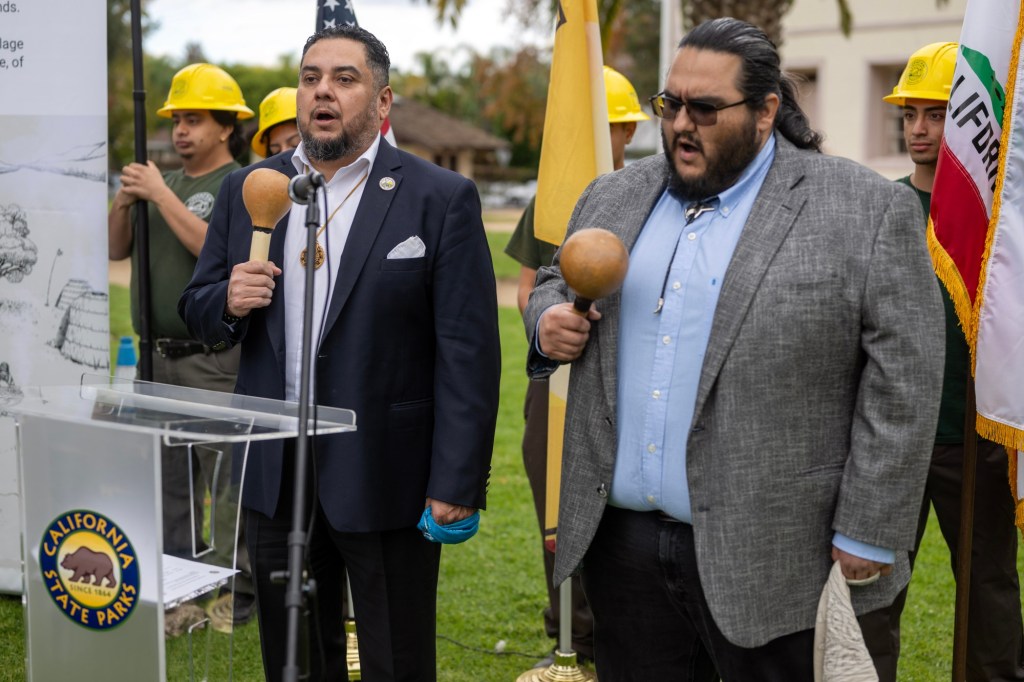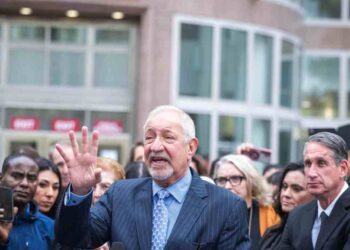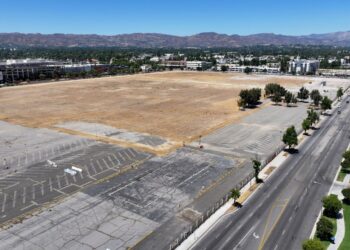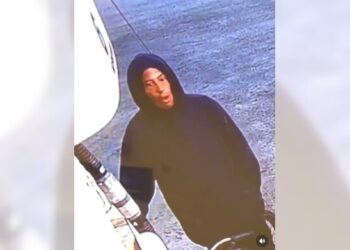On Tuesday morning, Rudy Ortega, Jr., president of Fernandeño Tataviam Band of Mission Indians, stood on land taken from his great-grandfather and signed an important agreement with the California Department of Parks and Recreation. While the Memorandum of Understanding (MOU) between the tribe and the department will not return the land at Los Encinos State Historic Park, it marks a new chapter of collaboration to expand cultural and natural preservation efforts on state parks.
A key purpose of the agreement is to work with tribe members to improve the signage of tribal history and educational programming at parks like the Los Encinos State Historic Park, where the Siutcanga village, meaning “place of the oaks,” once stood.
“Many folks don’t know that we’re here in L.A., let alone when they come visit this park, they don’t know it holds a true rich history of the first peoples,” said Ortega. “This is the day that we sign off on an agreement of working with one another to build better communication and a bridge to bring the history of our tribal people to Los Angeles.”
The Fernandeño Tataviam Band of Mission Indians are the indigenous people of northern Los Angeles County whose population is about 900.
Prior to establishment of the Mission San Fernando in 1797, their ancestors were spread across independently governed villages in the Simi, San Fernando, Santa Clarita and Antelope valleys.
Tataviam is a traditional name, while Fernandeño comes from the name the Spanish colonizers gave to the tribe’s ancestors. Today many of the tribe’s descendants carry one of the three last names given by the Spanish: Ortega, Garcia and Ortiz.
The MOU applies to several parks located on the tribe’s ancestral land, including Topanga State Park, Malibu Creek Park and Santa Susana State Park. The MOU is the tenth such agreement that California State Parks has entered into with tribes across the state.
In addition to promoting the tribe’s history,…
Read the full article here







